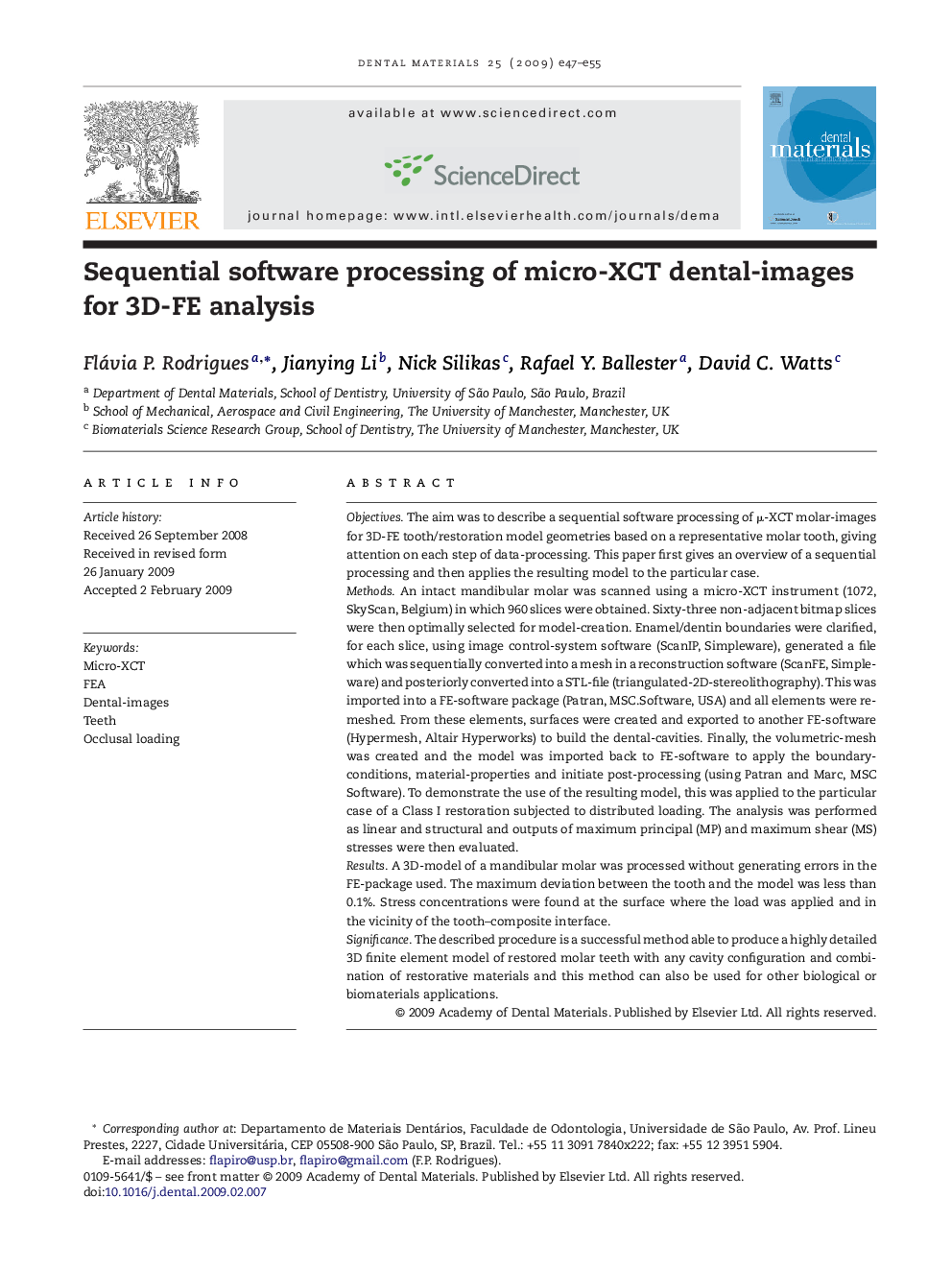| کد مقاله | کد نشریه | سال انتشار | مقاله انگلیسی | نسخه تمام متن |
|---|---|---|---|---|
| 1422348 | 986443 | 2009 | 9 صفحه PDF | دانلود رایگان |

ObjectivesThe aim was to describe a sequential software processing of μ-XCT molar-images for 3D-FE tooth/restoration model geometries based on a representative molar tooth, giving attention on each step of data-processing. This paper first gives an overview of a sequential processing and then applies the resulting model to the particular case.MethodsAn intact mandibular molar was scanned using a micro-XCT instrument (1072, SkyScan, Belgium) in which 960 slices were obtained. Sixty-three non-adjacent bitmap slices were then optimally selected for model-creation. Enamel/dentin boundaries were clarified, for each slice, using image control-system software (ScanIP, Simpleware), generated a file which was sequentially converted into a mesh in a reconstruction software (ScanFE, Simpleware) and posteriorly converted into a STL-file (triangulated-2D-stereolithography). This was imported into a FE-software package (Patran, MSC.Software, USA) and all elements were re-meshed. From these elements, surfaces were created and exported to another FE-software (Hypermesh, Altair Hyperworks) to build the dental-cavities. Finally, the volumetric-mesh was created and the model was imported back to FE-software to apply the boundary-conditions, material-properties and initiate post-processing (using Patran and Marc, MSC Software). To demonstrate the use of the resulting model, this was applied to the particular case of a Class I restoration subjected to distributed loading. The analysis was performed as linear and structural and outputs of maximum principal (MP) and maximum shear (MS) stresses were then evaluated.ResultsA 3D-model of a mandibular molar was processed without generating errors in the FE-package used. The maximum deviation between the tooth and the model was less than 0.1%. Stress concentrations were found at the surface where the load was applied and in the vicinity of the tooth–composite interface.SignificanceThe described procedure is a successful method able to produce a highly detailed 3D finite element model of restored molar teeth with any cavity configuration and combination of restorative materials and this method can also be used for other biological or biomaterials applications.
Journal: Dental Materials - Volume 25, Issue 6, June 2009, Pages e47–e55